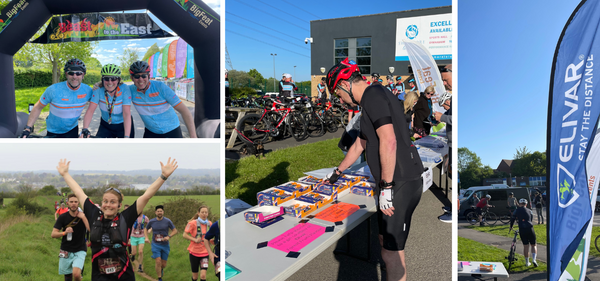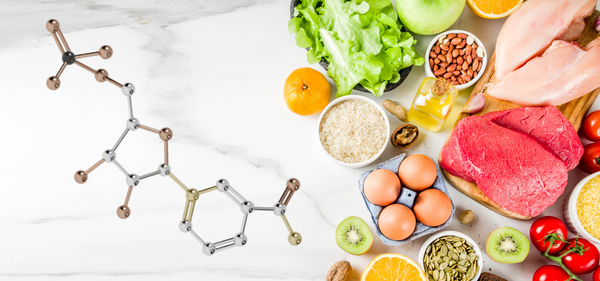WHAT HAPPENS WHEN WE AGE?

We often hear about elite sports people who are reaching the end of their careers and facing the prospect of “retirement”. With the physical peak in most sports being between 25 and 35 years of age, speculation on an athletes “retirement” reaches its own peak once they hit their 30’s.
While there are some immutable truths concerning the decline in performance of the human body as it ages, having an awareness of these facts allows us to manage our bodies better. Leaving aside the professional seeking to extend their career, for most of us exercise is first and foremost a healthy lifestyle choice – a way to challenge and push ourselves because we enjoy it.
In this article we look at some of the changes that come with age and how best to adapt our training to ensure that we get the most from our bodies over the long haul.
VO2max & Short High Intensity Workouts
VO2max is a measure of the capacity of our bodies to utilise oxygen during exercise. Research has shown that VO2max declines between 5-15% per decade. Much of the decline is related to the reduction in our maximum heart rates as we age, with a reducing stroke volume also contributing to the decline.
The good news is that endurance training has a positive impact on our VO2max – and specifically high intensity work outs. Studies show that older athletes who take on an exercise regime which includes intensity levels of between 60-90% of maximum heart rate 2-3 times a week can show the same 10-30% improvements in VO2max as younger athletes.
Muscle Strength & Endurance
Loss of muscle mass with age – know as sarcopenia – is well documented. While it does not seem that we can prevent the decline in muscle mass, and as a consequence muscle strength – we can slow the rate of decline. A primary factor in the rate of decline is lack of use – “the use it or use it” principle.
Exercise is the key to muscle retention and specifically weight-bearing exercise. All good so far – but it is important to take a “whole body” approach and look beyond the specific muscles that we use in our individual sports. As we age we should add some general body exercise routines to the training mix – e.g. runners and cyclists would benefit from some upper body work. This doesn’t have to be gym work – our own body weight in many cases is sufficient to get started with – if you can’t do 30 press ups you have no business paying a gym to use their bench press machine!
Connective Tissue & Flexibility
Muscles, tendons and ligaments are all major connective tissues. Ageing causes them to lose their elasticity and also causes a reduction in strength and flexibility. In addition, decreased water content in the tissues affects shock-absorbing capacity. Flexibility, or range of motion around the joints decreases. Lack of flexibility means that our knees, hips, and other joints must bear greater stress during exercise, rather than dissipating it to surrounding tissues, such as nearby muscles, as we did when we were younger, and as a result athletes will be more susceptible to injury during exercise.
While sitting lotus-position may not feel like a work out, as we age the benefits of maintaining good flexibility around our joints can have a significant impact on our performance and our ability to recover from injury.
About Elivar
Elivar – Sports Nutrition optimised for athletes over 35 year old. Our bodies change as we age, so should our sports nutrition. Try our Weekend Endurance Pack – fuel a weekend’s training with a selection of our Endure, Recover and Hydrate products for only £12.99 Try Now
Also in News

Elivar's Sustain Go! Energy Gels Fuelling BigFeat Events' Success
BigFeat Events, recognized for orchestrating captivating endurance events, stands out for its dynamic blend of cycling and running sportives. The recent "Beast to the East" cycling sportive, held on May 21st, is a sterling example of their commitment to crafting exhilarating experiences. A cornerstone of the success and popularity of these events has been the provision of Sustain Go! energy gels, generously sponsored by Elivar.
Previous running and events such as the "Bigwayround Trail Run" and "BigSea Trail Run" also benefited from the free distribution of Sustain Go! energy gels, much to the participants' delight. The energy boost and quicker recovery offered by these gels have consistently been instrumental in empowering athletes to perform their best.

NMN: Boosting Your Health from the Kitchen to the Medicine Cabinet
Did you know that Nicotinamide Mononucleotide (NMN), the star ingredient in numerous anti-aging supplements, also moonlights in several foods you might already enjoy? It's true! NMN is a vital precursor to NAD+, a molecule crucial to many biological processes, like cell growth, DNA repair, and metabolism. But as we age, NAD+ levels take a hit, and bolstering them through NMN intake can be beneficial. Now the question arises, can we simply count on our daily meals for our NMN fix?

